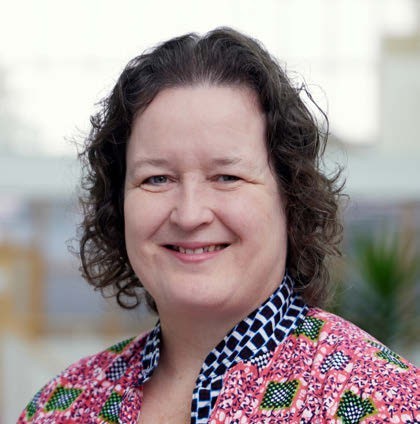Discovery & Development: AI
AI in the Drug Discovery Industry
IPT talks to Tamsin Mansley of Optibrium about how AI has been used in drug discovery up until now, and how it can be best applied in the future
IPT: How well do you feel current AI technologies are serving the drug discovery industry?
Tamsin Mansley: For drug discovery, there are three key areas of chemistry in which artificial intelligence (AI) technologies can be applied: generative chemistry, synthesis planning and compound property prediction. Together, these cover which potential drug candidates could be considered, how to synthesise them and whether they will have the required balance of properties to successfully meet the project’s objectives.
Each of these three key areas is served differently and faces different challenges based on the present tech landscape. For example, early generative chemistry often provided poor or mixed quality suggestions, leaving chemists to spend hours sifting through unstable or difficult to synthesise compound ideas. Moving on, when potential active compounds are identified, current methods for property prediction are limited, often struggling to predict complex absorption, distribution, metabolism and elimination (ADME) properties of new and previously unseen compounds, or only providing predictions for a few specified endpoints. As for synthetic chemistry, this is the most underserved of the three areas at present, as the intricacies of predicting feasible synthetic routes are generally difficult for current AI technologies to tackle.
That said, there is already useful technology available, but this still has significant limitations to overcome in order for technology to best serve the drug discovery industry.
IPT: Which up-and-coming technologies look set to overcome the current limitations in this field?
TM: AI alone will not be able to overcome limitations in the drug discovery field. Instead, this technology is useful in supporting the work of chemists, helping them to achieve success. Think, for example, of a chess game between an AI and a human. The AI can rapidly, without bias, explore and evaluate many different strategies. The human chess player considers the wider strategy and bases their game on experience and expertise. However, when a human player has access to AI to help inform their moves, they can together outperform any AI or a chess Grand Master. This is how AI should work in chemistry too, a concept called augmented chemistry. In areas such as idea generation for new potential drug molecules or compounds, augmented chemistry will make a big impact as we go forward, with new technologies allowing the user to guide the software more quickly and intuitively on the rise.

In addition, new technologies using deep learning to impute data can overcome the established methods’ limitations for pharmacokinetic property prediction. For example, in vivo pharmacokinetic experiments are very time-consuming and expensive, and chemists are often trying to make decisions based on limited ADME data, which, given experimental variability, will contain errors or artifacts likely to be misleading.
Quantitative structure-activity relationship (QSAR) models of these complex in vivo properties are notoriously poor, further limiting scientists’ ability to make informed decisions about compound progression. Deep learning imputation is the process of filling in the gaps in sparse experimental data using the limited results that are already available. It does this by identifying complex, non-linear relationships between assay endpoints to build robust predictive models where traditional methods fail.
“Partnerships are vital for identifying both successes and limitations of any new technology, providing the scientific rigour and overcoming hype”
These technologies can also provide information on uncertainty within the predictions, which can help inform chemists when they may have an inaccurate data-point or hidden opportunity, and highlight the most accurate predictions on which to base decisions.
Finally, although synthesis is an underdeveloped area, there is a lot of interesting research emerging in the predictive synthesis planning field – for example, the work of the Coley group at MIT.1We can expect to see AI technology in this challenging area substantially improve in the coming years.
IPT: What challenges to adoption do new drug discovery technologies face? How do you believe such barriers can be overcome?
TM: Some of the biggest challenges in adoption are not technological, but instead around people’s perceptions of AI technology. Talk of AI replacing people is not exactly helpful in encouraging widespread roll-out, so we need to be clear in emphasising the role of AI in supporting scientists, not taking over from them.
Furthermore, when AI is mentioned in the media in a positive way, often concepts are over-hyped without the scientific rigour to back up promises. So, changing perceptions, and continuing with stringent research and development processes, are the two most important solutions in widening usage of new technologies.
IPT: How can further innovation be achieved in this field?
TM: As with many research fields, collaboration is key to driving innovation. Different individuals and companies have different expertise in particular areas within informatics, drug discovery or beyond, so creating partnerships is important to holistically address challenges. Partnerships are vital for identifying both successes and limitations of any new technology, providing the scientific rigour and overcoming hype. As a software provider, it is also essential to keep the end user constantly in mind, so whatever is designed will address their specific needs and integrate with other relevant technologies.
Collaboration is already happening, with many AI firms working together with pharmaceutical companies to develop drug candidates. As just one example, Sanofi recently announced a new partnership with AI company Exscientia to develop up to 15 new drug candidates.2Such partnerships can drive forward research and innovation, however the main issues may be the costs involved. In this case, if a drug is commercialised from the partnership, Exscientia will be eligible for royalty payments of up to
21% of net sales, so it can be expensive for pharma companies to enter into partnerships such as these.
IPT: Let’s turn our attention now towards the future. What does the future hold for new drug discovery technologies? And which innovations are you most excited by?
TM: As AI technology improves, we will see some focus shifting away from small molecules towards peptides, macrocycles and other biologics. These larger, more complex molecules can be harder to model, with current technology in this space offering limited functionality. However, with innovations in AI coming, the industry will open up exciting new avenues to improve the drug discovery process for these larger molecules.
Innovations in generative chemistry will perhaps be the most exciting. Whilst in the past, AI software in this area has tended to suggest impractical molecules that could be difficult to synthesise, we are now seeing software that can tailor suggestions to the feedback of the user, identifying high-quality, synthesisable compounds based on the user’s specific objectives. In the future, such technology will expand in functionality, and we will see much more widespread adoption of generative technologies within drug discovery.

Tamsin Mansley is global head of Application Science and president of US subsidiary, Optibrium Inc. She holds a PhD in Organic Chemistry from the University of East Anglia, UK, and pursued Postdoctoral studies in the labs of Prof Philip Magnus at the University of Texas, US. Tamsin is an experienced drug discovery scientist, having worked as a medicinal chemist at Eli Lilly and UCB Research. Her interests lie in coupling machine learning and artificial intelligence techniques with generative chemistry approaches to explore chemistry space and guide compound design. Tamsin joined Optibrium in 2015 to develop new opportunities across North America for Optibrium’s fully integrated, elegant software that guides drug discovery. She also leads the global Application Science team, supporting the company’s existing client base.